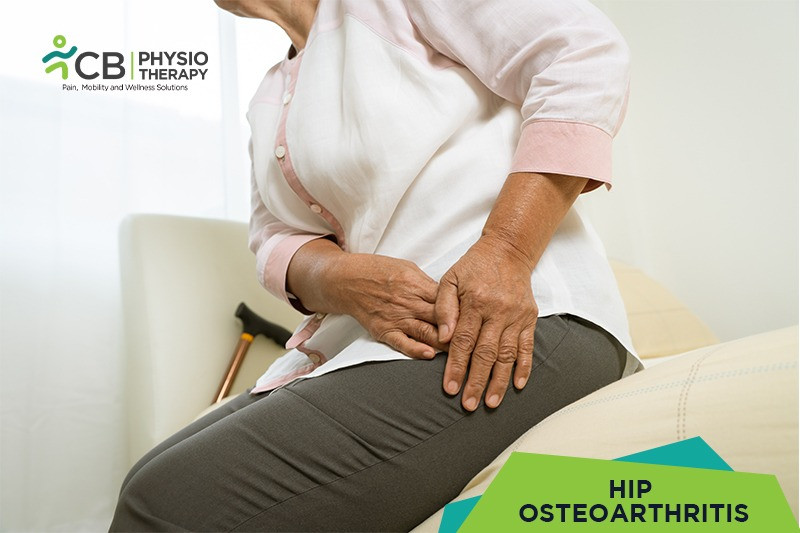
उपास्थि एक नरम और शॉक-एब्जॉर्बिंग है, जो हड्डियों के सिरों पर एक कुशन के रूप में कार्य करता है जहां वे जोड़ों को बनाने के लिए मिलते हैं, फीमर और श्रोणि की हड्डी के सॉकेट को कवर करते हैं, जिससे कूल्हे की गति चिकनी और दर्द रहित हो जाती है। हिप ऑस्टियोआर्थराइटिस का परिणाम तब होता है जब किसी जोड़ में सूजन या चोट चिकनी, रबरयुक्त उपास्थि का कारण बनती है जो संयुक्त सतहों को तोड़ने के लिए लाइन और कुशन करती है। जब उपास्थि क्षतिग्रस्त हो जाती है, तो जोड़ दर्दनाक और सूज जाता है। अधिक गंभीर मामलों में, दर्दनाक हड्डी स्पर्स बनते हैं जिन्हें ऑस्टियोफाइट्स के रूप में जाना जाता है।
हिप ऑस्टियोआर्थराइटिस का कोई विशिष्ट कारण नहीं है, लेकिन ऐसे कारक हैं जो रोग विकसित होने की अधिक संभावना है, इसमें शामिल हैं:
<उल शैली = "सूची-शैली-प्रकार: वर्ग;">
हिप ऑस्टियोआर्थराइटिस का सबसे आम लक्षण कूल्हे के आसपास दर्द है संयुक्त, अन्य लक्षणों में शामिल हैं:
<उल शैली = "सूची-शैली-प्रकार: वर्ग;">
पैथोलॉजी:
ऑस्टियोआर्थराइटिस उपास्थि का क्षरण है और सिनोवियम मोटा हो जाता है , सबकॉन्ड्रल हड्डी लिटिक घाव बनाने के लिए फिर से तैयार करना शुरू कर देती है।
शारीरिक परीक्षा: < /अवधि>
X-rays:
एक्स-रे हड्डियों के विस्तृत चित्र बनाता है। गठिया के जोड़ के एक्स-रे में हड्डी में बदलाव, जोड़ के स्थान का संकरा होना और ऑस्टियोफाइट्स का बनना दिखाई दे सकता है।
चुंबकीय अनुनाद इमेजिंग (MRI): < /मजबूत>
चुंबकीय अनुनाद इमेजिंग (MRI) का उपयोग मांसपेशियों, स्नायुबंधन और टेंडन को किसी भी क्षति का पता लगाने के लिए किया जाता है।< /अवधि>
बोन स्कैन:< /अवधि>
एक हड्डी स्कैन कूल्हे की हड्डी और कोमल ऊतकों की स्थिति निर्धारित करने में मदद करता है।
दवाएं: दर्दनिवारक, गैर-स्टेरायडल विरोधी भड़काऊ दवाएं (एनएसएआईडी), कॉर्टिकोस्टेरॉइड्स।
ध्यान दें: डॉक्टर के नुस्खे के बिना दवा नहीं लेनी चाहिए।
सर्जरी: यदि रूढ़िवादी उपचार से लक्षणों में राहत नहीं मिलती है तो सर्जरी की जाती है।
Osteotomy: फीमर या सॉकेट (उनमें से कोई भी) का सिर पहले काटा जाता है और फिर हिप संयुक्त से दबाव मुक्त करने के लिए पुनः संरेखित किया जाता है।< /पी>
हिप रिसर्फेसिंग:< /अवधि>
हिप रिप्लेसमेंट सर्जरी:
गंभीर मामलों में, हिप जॉइंट खराब हो जाता है जिससे हड्डी रगड़ने लगती है। इस स्थिति में हिप जॉइंट रिप्लेसमेंट सर्जरी की आवश्यकता होती है।
क्रायोथेरेपी या कोल्ड थेरेपी के कारण सुन्नता हो जाती है जिसके परिणामस्वरूप रक्त वाहिकाएं सिकुड़ जाती हैं, जिससे सूजन कम हो जाती है।
थर्मोथेरेपी संयोजी ऊतक और मांसपेशियों तक पहुँचती है, रक्त प्रवाह में सुधार करती है, विषाक्त पदार्थों को हटाती है, और दर्द कम करती है। यह लचीलेपन में भी सुधार करता है जिससे गति की सीमा में सुधार होता है।
अल्ट्रासाउंड थेरेपी ऐंठन को कम करने और जोड़ों की जकड़न को कम करने में मदद करती है।
ट्रांसक्यूटेनियस इलेक्ट्रिकल स्टिमुलेशन (TENS):
इंटरफेरेंशियल करंट थेरेपी (IFT):
इंटरफेरेंशियल करेंट थेरेपी (IFT), एक अन्य फिजियोथेरेपी पद्धति है जिसका उपयोग दर्द कम करने और गतिशीलता बढ़ाने के लिए किया जा सकता है।
हाइड्रोथेरेपी:
मैनुअल थेरेपी में कूल्हे की गति की गुणवत्ता और सीमा बढ़ाने के लिए कई तकनीकें और स्ट्रेच होते हैं।
गति अभ्यासों की श्रेणी को पैर और कूल्हे के जोड़ के निष्क्रिय आंदोलनों के साथ शुरू किया जाता है और सक्रिय अभ्यासों में आगे बढ़ाया जाता है।< /अवधि>
स्ट्रेचिंग एक्सरसाइज:< /अवधि>
फ़िज़ियोथेरेपिस्ट जोड़ों और उसके आसपास की मांसपेशियों को धीरे से हिलाने के लिए स्ट्रेचिंग तकनीक का उपयोग करते हैं। नियमित खींचने से गति की सीमा बढ़ जाती है और इस प्रकार गतिशीलता बढ़ जाती है।
एरोबिक व्यायाम जैसे कार्डियो या धीरज व्यायाम, जैसे तेज चलना, जोरदार तैराकी, स्थिर बाइक, आदि कर सकते हैं कूल्हे के जोड़ पर जोर डाले बिना भी किया जा सकता है।
<स्पैन स्टाइल="फॉन्ट-फैमिली: 'टाइम्स न्यू रोमन', टाइम्स, सेरिफ; फॉन्ट-साइज: 14pt;">रोगी को दैनिक जीवन में कम प्रभाव वाली गतिविधियां करने की सलाह दी जाती है और कूल्हे के जोड़ पर दबाव डालने वाली गतिविधियों को कम करें, जैसे जॉगिंग के बजाय चलना, सहायक उपकरणों जैसे बेंत, उठी हुई टॉयलेट सीट आदि का उपयोग करना। रोगी को नियमित रूप से व्यायाम करने और दैनिक गतिविधियों के दौरान कूल्हे के जोड़ की रक्षा करने की सलाह दी जाती है।
फिजियोथेरेपी के बारे में हमारे विशेषज्ञों को खोजने और उनसे जुड़ने के लिए अपने शहर का चयन करें हिप ऑस्टियोआर्थराइटिस